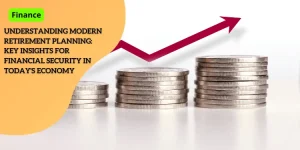Pre-Election Economic Boost: Consumer Confidence Defies Previous Polling Data

Anúncios
The month of October brought an unexpected surge in consumer confidence, contrasting with earlier polling data that showed Americans were generally unhappy with the economy.
The Conference Board’s confidence index, a key measure of consumer sentiment, skyrocketed to 108.7, marking its highest monthly gain since March 2021.
Anúncios
This uptick is a notable development given the current economic and political climate.
Present Situation Component
One of the standout elements of this surge was the significant increase in the present situation component of the confidence index.
Anúncios
This figure, which reflects consumers’ views on the current state of the economy, climbed a substantial 14.2 points to reach 138.
This increase indicates that consumers are experiencing and acknowledging better economic conditions than in previous months.
This increase was a pleasant surprise to analysts, who had not anticipated such a sharp rise.
Dana Peterson, chief economist at the Conference Board, noted that in October, all five components of the index showed improvement.
Consumers’ assessments of current business conditions turned positive, showing strong signs of economic recovery.
Future Sentiment
Consumer sentiment about future economic conditions also improved.
The future expectations component of the confidence index rose by 6.3 points to reach 89.1.
This figure is well above the recession-warning level of 80, signaling cautious optimism among consumers about the months ahead.
This shift suggests that consumers are beginning to believe in a more robust economic recovery, despite ongoing challenges such as inflation and political uncertainties.
As a result, economic forecasts have started adjusting in response to these more optimistic consumer sentiments.
 The consumer humor get a boost with the economy
The consumer humor get a boost with the economy
Implications
The unexpected boost in consumer confidence has several implications.
Historically, a strong economy tends to favor the incumbent party in an election year.
As such, this newfound consumer confidence could play a significant role in the upcoming elections, though it is not the only factor at play.
Moreover, while the improved confidence indicators suggest a strengthening economy, they also bring complexities.
Inflation and the cost of living continue to be major concerns for many Americans.
These factors could influence voter sentiment and add to market volatility as the election approaches.
Market responses have been mixed, reflecting uncertainties about future policy impacts depending on the election’s outcome.
Transition to the Next Topic
Understanding these trends in consumer confidence provides a vital context for analyzing the broader economic indicators and forecasts shaping the current landscape.
The ripple effects of this confidence boost will become clearer as we delve into the detailed demographic analysis and labor market conditions that further explain the state of the economy.
Demographic Analysis of Confidence Boost
It’s not just one group of people feeling better about the economy—October’s surge in consumer confidence was a broad-based phenomenon, stretching across age groups and income levels.
This month marked a significant improvement, as the Conference Board’s confidence index rocketed to 108.7, fueled by more positive perceptions of both the present situation and future expectations.
Age Groups: The Sharpest Rise
Looking at age groups, the increase in confidence was most notable among consumers aged 35 to 54.
This group saw the most pronounced boost.
It’s an intriguing demographic to consider, as individuals in this age range often juggle significant financial commitments such as mortgages, college tuition for children, and retirement savings.
This newfound optimism could potentially translate into greater economic activity, particularly in sectors like real estate and consumer goods, where this age group tends to be major players.
Income Levels: Confidence at the High End
Across various income levels, those earning over $100,000 annually have experienced the highest levels of consumer confidence over the past six months.
This sustained confidence among higher earners might be due to the greater financial security and resilience these households enjoy, even amidst economic uncertainties.
Additionally, individuals under the age of 35 have also demonstrated remarkable confidence.
This younger cohort, many of whom are millennials or older Gen Z, are buoyed by recent job market improvements and the potential for future earnings growth.
The interplay between these confident young professionals and high-earning older adults could have substantial implications for sectors ranging from tech to luxury goods.
A Broad-Based Trend
The broad-based nature of the uptick in consumer confidence is particularly notable.
While the 35-54 age group and high earners lead the charge, other segments of the population are not far behind.
This pervasive sense of optimism suggests that the economic recovery is touching various corners of the population, not just a select few.
As we continue to analyze these demographic insights, the ripple effects of such widespread confidence could reveal themselves in increasing consumer spending and a more robust economic outlook overall.
Next, we’ll dive into the ongoing conditions in the labor market and how they intertwine with the recent consumer confidence surge.
Labor Market Conditions
Job Openings Decrease
The labor market is experiencing some interesting shifts.
Job openings fell to 7.4 million in September, a notable drop from the 9.3 million available a year ago.
This decrease suggests that employers are finding it easier to fill positions, potentially due to better alignment between job seekers’ skills and market needs.
The private sector continues to hire, albeit at a more cautious pace compared to the previous year.
Continued Growth in Specific Sectors
Despite the overall decline in job openings, certain sectors are showing robust growth.
Hospitality, healthcare, and government sectors continue to expand their workforce.
These industries have been essential during the economic recovery, providing a substantial number of new jobs.
- 📈 Hospitality: The resurgence of travel and dining has driven significant hiring in this sector.
- 📈 Healthcare: There is a persistent demand for healthcare professionals, spurred by an aging population and ongoing healthcare needs.
- 📈 Government: Various government roles, particularly in public health and infrastructure projects, have fueled job creation.
Notable Improvements in Other Fields
Transportation, warehousing, and professional fields have also shown marked improvements.
The transportation and warehousing sectors are benefiting from the sustained boom in e-commerce, necessitating more logistics and supply chain workers.
On the professional front, fields like engineering and IT are seeing growth.
Companies are investing in tech and professional expertise to drive innovation and efficiency.
Ger Doyle, head of Experis North America, remarked, “While there are signs of a cooling labor market, the stability compared to last year, along with growth above 2023 levels, highlights moderate optimism for the market as economic conditions stabilize.”
This is a promising indication that, despite fewer open positions overall, the labor market is still dynamic and adapting to new economic realities.
The shifts in the labor market are crucial to understanding broad economic trends and their impact on consumer confidence.
Up next, we’ll explore how these labor market conditions interact with various economic indicators to paint a fuller picture of the current economic landscape.
Economic Indicators and Forecasts
GDP Growth
The U.S. economy is showing promising signs as we move deeper into the third quarter.
Economists are projecting a solid 3% growth in the Gross Domestic Product (GDP) for this period.
This forecast aligns with recent indicators pointing towards an extended period of economic expansion, which has been bolstered by increased consumer confidence detailed in previous sections.
Consumer Spending
Consumer spending, a critical component of overall economic health, is projected to rise by 3.2% in the third quarter.
This increase reflects consumers’ higher confidence levels and their willingness to invest more in goods and services.
This uptick in spending not only supports retail businesses but also creates a positive ripple effect across various sectors of the economy.
Home Prices
Home prices continue to climb, albeit at a slightly reduced pace.
In August, home prices rose at an annual rate of 4.2%.
However, the pace varied significantly across different regions.
For instance, New York saw an impressive 8.1% increase, while Denver experienced a modest 0.7% rise.
Despite these regional discrepancies, the overall trend points towards a growing real estate market.
The rising prices, coupled with elevated mortgage rates, pose challenges for potential homebuyers, though it underscores a robust demand for housing.
 House prices still fluctuating
House prices still fluctuating
Regional Variations
The fluctuations in home prices are driven by various factors, including local economic conditions, supply and demand dynamics, and demographic trends.
For example, metropolitan areas with strong job markets and population growth, such as New York and Las Vegas, are experiencing faster price increases.
Conversely, regions with slower economic growth or higher housing supply, like Denver, are seeing more moderate price gains.
As we move towards the end of this analysis, it’s crucial to recognize that these economic indicators collectively paint a picture of cautious optimism.
The projected GDP growth, increase in consumer spending, and rising home prices all suggest an underlying strength in the economy.
However, it’s essential to keep an eye on these trends and consider the broader context, especially in light of upcoming political and electoral developments.
Political and Electoral Implications
Economic Performance and Incumbent Advantage
A strong economy tends to boost the chances of the incumbent party in elections.
Historical data supports this trend, where positive economic indicators can tilt voter sentiment in favor of the current administration.
As the Conference Board’s confidence index surged to 108.7 in October, marking the highest monthly gain since March 2021, the current administration may benefit from this economic optimism.
The present situation component climbing by 14.2 points to 138 and future sentiment at 89.1 suggests robustness that could be politically advantageous.
Persistent Concerns: Inflation and Cost of Living
Despite the positive economic indicators, inflation and the cost of living remain significant concerns for voters.
Many Americans continue to feel the pinch of rising prices, which can erode the perceived benefits of other economic gains.
Polls indicate that inflation and the cost of living are still top election issues, overshadowing other positive economic data.
This duality presents a challenge for the incumbent party, which must address these concerns convincingly to maintain voter support.
Market Volatility and Election Uncertainty
Recent market behavior reflects a degree of uncertainty about the upcoming election outcomes and the potential policy impacts of different candidates.
The markets have been notably volatile, partially due to forecasts that predict former President Trump might secure a significant win.
His previous policies, often seen as inflationary, have led to a rise in bond yields, indicating market apprehension about future economic stability.
Regional Economic Disparities
The economic indicators also show regional variations, particularly in the housing market.
Home prices saw an annual increase of 4.2% in August, with areas like New York, Las Vegas, and Chicago leading with even higher rates.
These regional differences might influence local political contests, as voters in areas with soaring home prices could experience economic conditions differently than those in regions with more moderate increases.
Conclusion
As the election approaches, the intersection of economic performance and voter sentiment will be crucial.
Strong GDP growth, increased consumer spending, and rising home prices collectively boost the overall economic outlook.
However, the persistent concerns over inflation and cost of living, along with regional economic variations, ensure that voter sentiment remains complex and multifaceted.
Understanding these nuances will be essential for both the incumbent and opposition parties in navigating the upcoming elections.
Liked the post? Read this one about the housing market.






